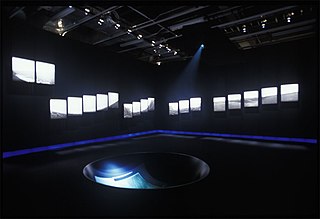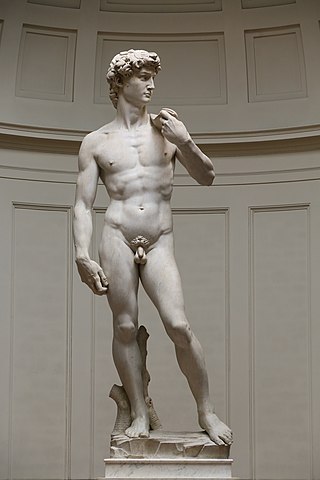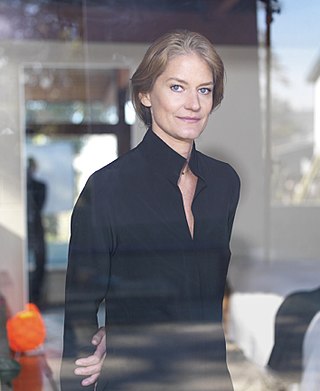
Thomas Cowperthwait Eakins was an American realist painter, photographer, sculptor, and fine arts educator. He is widely acknowledged to be one of the most important American artists.

Daidō Moriyama is a Japanese photographer best known for his black-and-white street photography and association with the avant-garde photography magazine Provoke.
Erotic photography is a style of art photography of an erotic, sexually suggestive or sexually provocative nature.

Depictions of nudity include all of the representations or portrayals of the unclothed human body in visual media. In a picture-making civilization, pictorial conventions continually reaffirm what is natural in human appearance, which is part of socialization. In Western societies, the contexts for depictions of nudity include information, art and pornography. Information includes both science and education. Any ambiguous image not easily fitting into one of these categories may be misinterpreted, leading to disputes. The most contentious disputes are between fine art and erotic images, which define the legal distinction of which images are permitted or prohibited.

Fat feminism, often associated with "body-positivity", is a social movement that incorporates feminist themes of equality, social justice, and cultural analysis based on the weight of a woman. This branch of feminism intersects misogyny and sexism with anti-fat bias. Fat feminists advocate body-positive acceptance for all bodies, regardless of their weight, as well as eliminating biases experienced directly or indirectly by fat people. Fat feminists originated during third-wave feminism and is aligned with the fat acceptance movement. A significant portion of body positivity in the third-wave focused on embracing and reclaiming femininity, such as wearing makeup and high heels, even though the second-wave fought against these things. Contemporary western fat feminism works to dismantle oppressive power structures which disproportionately affect working class poor people or poor people generally. It covers a wide range of topics such as diet culture, fat-phobia, representation in media, ableism, and employment discrimination.

Taku Aramasa is a Japanese photographer.

Nude photography is the creation of any photograph which contains an image of a nude or semi-nude person, or an image suggestive of nudity. Nude photography is undertaken for a variety of purposes, including educational uses, commercial applications and artistic creations.

The nude, as a form of visual art that focuses on the unclothed human figure, is an enduring tradition in Western art. It was a preoccupation of Ancient Greek art, and after a semi-dormant period in the Middle Ages returned to a central position with the Renaissance. Unclothed figures often also play a part in other types of art, such as history painting, including allegorical and religious art, portraiture, or the decorative arts. From prehistory to the earliest civilizations, nude female figures were generally understood to be symbols of fertility or well-being.

Women En Large: Images of Fat Nudes by Laurie Toby Edison, with text by Debbie Notkin, was published in 1994 by Books in Focus. The book is a fine-art photography book of nudes of fat women. It contains 41 black-and-white photographs and two essays by Notkin, plus an artist's statement by Edison and an assortment of work by the women in the photographs.

Elise Matthesen is an American essayist, journalist, poet, and fiction writer, an award-winning maker of art jewelry and a long time bisexual rights activist. For 13 years she was the companion of the late John M. Ford, until his death in September 2006. She lives in Minneapolis, Minnesota and is a member of the First Universalist Church there.

The Swimming Hole is an 1884–85 painting by the American artist Thomas Eakins (1844–1916), Goodrich catalog #190, in the collection of the Amon Carter Museum of American Art in Fort Worth, Texas. Executed in oil on canvas, it depicts six men swimming naked in a lake, and is considered a masterpiece of American painting. According to art historian Doreen Bolger it is "perhaps Eakins' most accomplished rendition of the nude figure", and has been called "the most finely designed of all his outdoor pictures". Since the Renaissance, the human body has been considered both the basis of artists' training and the most challenging subject to depict in art, and the nude was the centerpiece of Eakins' teaching program at the Pennsylvania Academy of the Fine Arts. For Eakins, this picture was an opportunity to display his mastery of the human form.
Akira Gomi is a Japanese photographer whose work focuses on beauty across racial lines. His work is in the style of Laurie Toby Edison.

Mark Keith Laurie is a Canadian photographer, specializing in female fine art photography and digital photography. He is also a teacher, speaker, author, and studio mentor.

Nude is a black and white photograph taken by Edward Weston in 1936. It shows an apparently nude woman with her arms wrapped around her legs while she sits on a blanket in bright sunlight against a darkened doorway. The dynamic balance of the light and dark accentuate the curves and angles of the woman's body; at the same time her face and all but the slightest hint of her pubic area are hidden from view, requiring the viewer to concentrate on her arms, legs, feet and hands. It is an image of a nude that concentrates solely on the forms of the body rather than the sexuality. The model was his muse and assistant, Charis Wilson, whom he married a year later.
Laura Aguilar was an American photographer. She was born with auditory dyslexia and attributed her start in photography to her brother, who showed her how to develop in dark rooms. She was mostly self-taught, although she took some photography courses at East Los Angeles College, where her second solo exhibition, Laura Aguilar: Show and Tell, was held. Aguilar used visual art to bring forth marginalized identities, especially within the LA Queer scene and Latinx communities. Before the term Intersectionality was used commonly, Aguilar captured the largely invisible identities of large bodied, queer, working-class, brown people in the form of portraits. Often using her naked body as a subject, she used photography to empower herself and her inner struggles to reclaim her own identity as “Laura”- a lesbian, fat, disabled, and brown person. Although work on Chicana/os is limited, Aguilar has become an essential figure in Chicano art history and is often regarded as an early "pioneer of intersectional feminism” for her outright and uncensored work. Some of her most well-known works are Three Eagles Flying, The Plush Pony Series, and Nature Self Portraits. Aguilar has been noted for her collaboration with cultural scholars such as Yvonne Yarbo-Berjano and receiving inspiration from other artists like Judy Dater. She was well known for her portraits, mostly of herself, and also focused upon people in marginalized communities, including LGBT and Latino subjects, self-love, and social stigma of obesity.

Fine art nude photography is a genre of fine-art photography which depicts the nude human body with an emphasis on form, composition, emotional content, and other aesthetic qualities. The nude has been a prominent subject of photography since its invention, and played an important role in establishing photography as a fine art medium. The distinction between fine art photography and other subgenres is not absolute, but there are certain defining characteristics.

Mona Kuhn is a German-Brazilian contemporary photographer best known for her large-scale photographs of the human form and essence. An underlying current in Kuhn's work is her reflection on our longing for spiritual connection and solidarity. As a result, her approach is unusual in that she develops close relationships with her subjects, resulting in images of remarkable intimacy. Kuhn's work shows the human body in its natural state while simultaneously re-interpreting the nude as a contemporary canon of art. Her work often references classical themes, has been exhibited internationally, and is held in several collections including the J. Paul Getty Museum, The Los Angeles County Museum of Art, the Hammer Museum and the Pérez Art Museum Miami.

Joan Semmel is an American feminist painter, professor, and writer. She is best known for her large-scale naturalistic nude self portraits as seen from her perspective looking down.

Marguerite Agniel was a Broadway actress and dancer, who then became a health and beauty guru in New York in the early 20th century. She is known for her 1931 book The Art of the Body: Rhythmic Exercise for Health and Beauty, one of the first to combine yoga and nudism.
Haji Oh is a third-generation Zainichi Korean contemporary artist. Her Japanese name is Okamura Natsue.

















